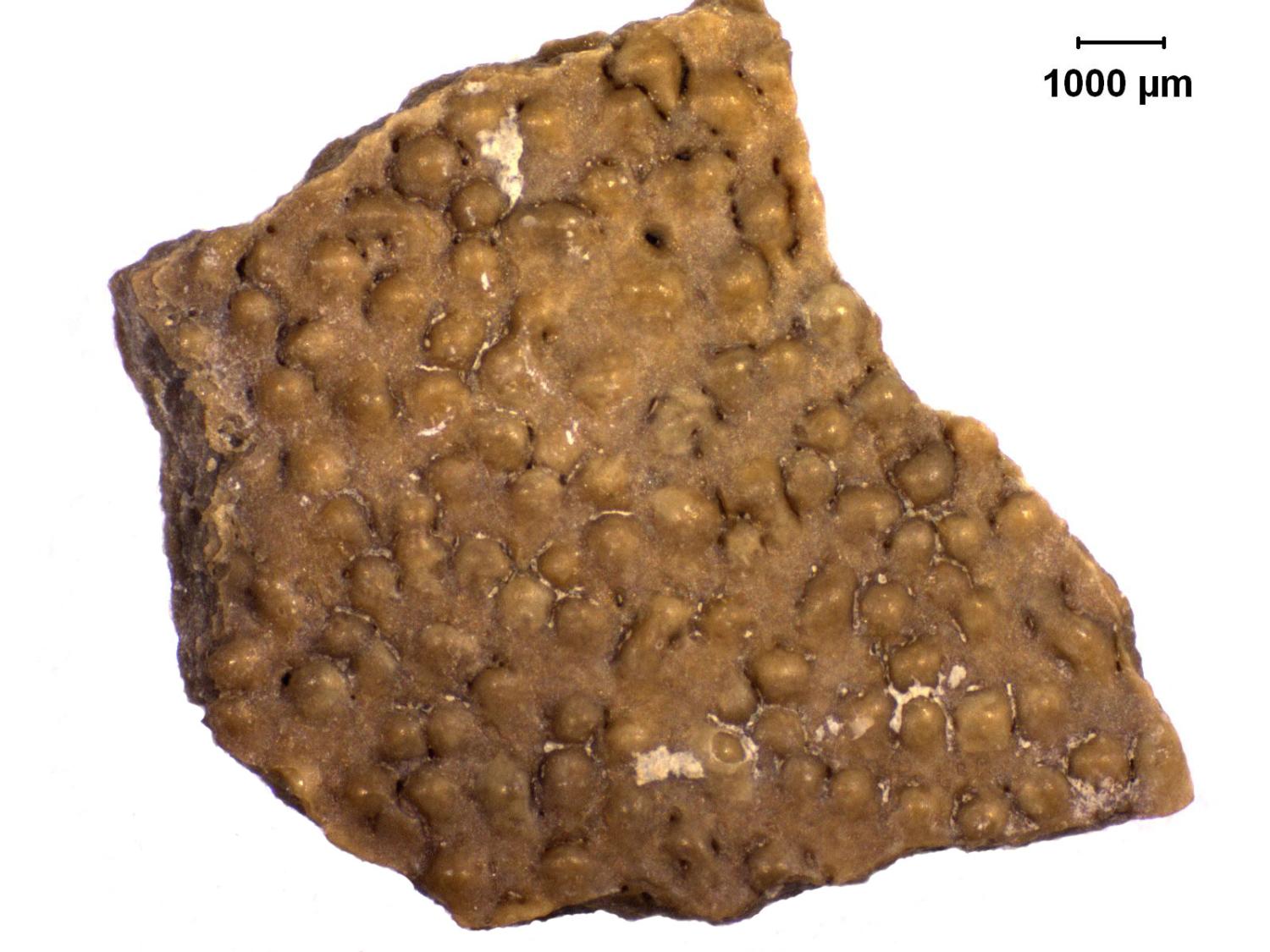Temporarily Closed
During the final phase of the Hellems Building reconstruction project, the CU Museum will be closed for reorganization. We will reopen on the first day of Spring Semester, January 8, 2026. Special access requests will be considered on a case-by-case basis. Please email cumuseum@colorado.edu for more information.
Fossilized Eggshells
With over 3000 specimens, the University of Colorado Museum of Natural History has one of the most extensive fossil eggshell collections in the Rocky Mountain region. TAfter realizing that no one at the time was capable of identifying fossil eggshell specimens or figuring out which animal laid the egg, Karl embarked on a nearly 20-year career studying eggshells, Karl’s dedication and motivation allowed him to carve out his own little niche in paleontology and do what was not previously done, while advancing and expanding knowledge in the field. Karl worked with several researchers from around the world to develop a standardized terminology and classification system for fossil eggshells called parataxonomy, which is a naming system that assigns an oogenus and oospecies (‘oo’ means egg) to different types of eggshell. This eggshell taxonomic system is still in use today and has helped make fossil eggshell analysis an important research tool in the study of the reproductive behavior of extinct animals.
What can fossil eggshells tell us? Karl Hirsch and his collaborators discovered that the internal crystalline structure, surface textures, and eggshell pores are unique for different kinds of animals. These patterns help researchers determine whether a fossil egg was laid by a dinosaur, bird, turtle, crocodile, or another egg-laying vertebrate. Usually, it is impossible to tell the specific genus and species of the egg layer. However, in some rare cases, the embryo is still inside the egg, which can then be used to identify the egg layer to a specific genus and species. Embryonic remains can also be used to study the early growth stages and bone development in baby and juvenile extinct animals. The size of a fossil egg, number, size, and arrangement of eggs in a nest, and surface texture, eggshell pores, and internal crystalline structure of an egg can tell us about an extinct animal’s reproductive anatomy, how they reproduced, and their nesting habits. Lastly, finding fossil eggs, nests, and baby and adult individuals all in the same locality can lead to conclusions about the parenting behavior of extinct animals.
Even though fossil eggshells are relatively uncommon in most fossil deposits, fossil eggshells can be found worldwide. Fossil eggshells are mostly found as small fragments, but rare whole eggs, nests structures, egg clutches, and eggs still within the body cavity of the animal have also been found. The oldest known eggs are Late Triassic in age (200 million years old) from South America, while some of the youngest fossil eggs are Pleistocene in age (~2.6 million to 12,000 years ago).
Close-up view of eggshell fragment
A close up view of a dinosaur eggshell fragment. Note the bumpy surface texture, which can be used to identify the oogenus and oospecies of the specimen as well as which animal made the egg.
Catalog Number: UCM 346
Parataxonomy: Spheroolithidae
Location: Teton Co., Montana
Age: Late Cretaceous, Campania
Stratigraphy: Two Medicine Formation
Single fossil crocodile egg
This is a picture of a 56 to 33.9 million year old fossil egg made by a crocodile. It was given the parataxonomic name Krokolithes wilsoni. Whole eggs like this are rare in the fossil record.
Catalog Number: UCM 93
Parataxonomy: Krokolithes wilsoni
Location: Garfield Co., Colorado
Age: Eocene
Stratigraphy: DeBeque Formation
Four fossil eggs of unkown Cretaceous animal
This is a nearly complete Late Cretaceous-aged fossil egg made by an unknown animal. Whole eggs like this are rare in the fossil record.
Catalog Number: UCM 127
Location: Montezuma Co., Colorado
Age: Late Cretaceous
Stratigraphy: Menefee Formation
Wilson, L. E., Chin, K., Jackson, F.D., Bray, E.S., 2009, Fossil eggshell: Fragments from the past: https://ucmp.berkeley.edu/science/eggshell/index.php (accessed May 2020).


